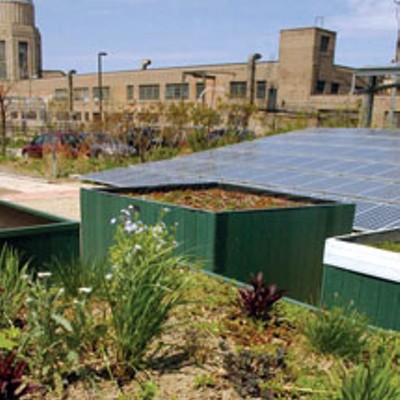Most homes are not lacking in ways they can be healthier for family and kinder to the environment. For one, indoor air quality is a serious problem affecting millions of homes. Studies show that air within homes can be more seriously polluted than the air outdoors — even in the largest and most industrialized cities.
According to Glenn Haege, a master handyman who hosts a national radio show on home repair, as our homes and apartments have become more energy-efficient and airtight, “humidity levels from cooking and breathing tend to increase, causing mold and mildew.” Harmful chemicals, he says, from construction materials, insulation, furniture, carpeting, padding, paints, solvents, and household cleaners, drawn by this moist atmosphere, combine to contaminate the indoor air, which then stays trapped inside.
The first step in remedying this problem is to test your indoor air. Pure Air and EnviroLogix, among others, sell inexpensive and easy-to-use indoor-air-quality testing kits. Once you get an idea of the contaminants floating around your home, you can get to work replacing the offending sources accordingly. Green superstores such as the Environmental Home Center, Green Building Supply, and Oikos offer a wealth of greener and healthier building supplies and materials. Also, BuildingGreen.com offers a free online “GreenSpec” database with detailed listings for more than 2,000 environmentally preferable building products.
Materials outside the home can also contribute to health problems. One example is pressure-treated lumber, which contains a form of cyanide to keep pests away. Kids who play on backyard jungle gyms and decks made of such material can experience rashes and skin infections. Cedar wood is a naturally pest-resistant alternative that, though more expensive, is a kinder-gentler option that will stand the test of time.
Other ways to green up the home include replacing traditional incandescent light bulbs with more energy-efficient compact fluorescents and switching out conventional hot water heaters in favor of solar or on-demand tankless versions. And for saving on water, replacing traditional showerheads and toilets with pressurized low-flow alternatives can save gallons per day while generating cost savings on utility bills. Capturing rainwater and shower “gray water” to irrigate the garden is another smart move.
Do-it-yourselfers can find hundreds of Web sites offering tips on green building and repair. Haege’s MasterHandyman.com and NaturalHandyMan.com both offer a plethora of articles and links and are good resources if you’re looking to improve your own handy skills while staying true to your green ideals. Two helpful books are Green Remodeling, by David Johnston and Kim Master; and Green Building Materials: A Guide to Product Selection and Specification, by Ross Spiegel and Dru Meadows. For less handy homeowners, finding a handyman well versed in green building issues might be a better way to go. The Natural Handyman Network offers a free online search tool that should offer some promising leads.
For more information: MasterHandyman.com, www.masterhandyman.com; BuildingGreen.com, www.buildinggreen.com; EnviroLogix, www.envirologix.com; Environmental Home Center, www.environmentalhomecenter.com; Green Building Supply, www.greenbuildingsupply.com; Oikos, www.oikos.com; The Natural Handyman Network, www.naturalhandyman.com.
Send questions to Earth Talk, care of E/The Environmental Magazine, P.O. Box 5098, Westport, CT 06881 or e-mail [email protected].




















